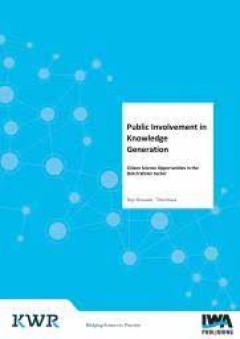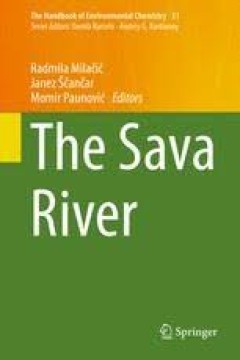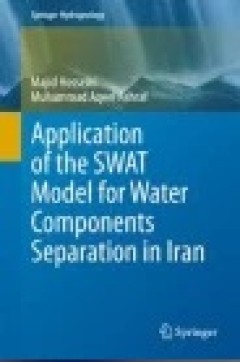Filter by

Public Involvement in Knowledge Generation Citizen Science Opportunities in …
Public Involvement in Knowledge Generation is an Open Access co-publication with KWR.
- Edition
- -
- ISBN/ISSN
- 9781789060492
- Collation
- -
- Series Title
- -
- Call Number
- -

Basic Numerical Methods in Meteorology and Oceanography
The purpose of this book is to provide an introduction to numerical modelling of the ocean and the atmosphere. It originates from courses given at Stockholm University and is intended to serve as a textbook for students in meteorology and oceanography with a background in mathematics and physics. Focus is on numerical schemes for the most commonly used equations in oceanography and meteorology …
- Edition
- -
- ISBN/ISSN
- 9789176351727
- Collation
- -
- Series Title
- -
- Call Number
- -

Toxic Pollutants in China Study of Water Quality Criteria
The book presents some of the findings of research into China’s water quality criteria for toxic pollutants, including heavy metals, PAHs and emerging pollutant. Water quality criteria (WQC) are the scientific basis for establishing water quality standards (WQSs). For a long time, the study of WQC in China has been neglected, so that almost all of China’s WQSs were developed based on foreig…
- Edition
- -
- ISBN/ISSN
- 978-94-017-9795-5
- Collation
- -
- Series Title
- -
- Call Number
- -

Their World: A Diversity of Microbial Environments
This volume summarizes recent advances in environmental microbiology by providing fascinating insights into the diversity of microbial life that exists on our planet. The first two chapters present theoretical perspectives that help to consolidate our understanding of evolution as an adaptive process by which the niche and habitat of each species develop in a manner that interconnects individua…
- Edition
- -
- ISBN/ISSN
- 978-3-319-28071-4
- Collation
- -
- Series Title
- -
- Call Number
- -

The Water We Eat Combining Virtual Water and Water Footprints
This book pursues a comprehensive, multidisciplinary approach in order to analyze the relationship between water and food security. It demonstrates that most of the world’s economies lack sufficient water resources to secure their populations’ food requirements and are thus virtual importers of water. One of the most inspiring cases, which this book is rooted in, is Italy: the third largest…
- Edition
- -
- ISBN/ISSN
- 978-3-319-16393-2
- Collation
- -
- Series Title
- -
- Call Number
- -

The Shipping Industry, Ocean Governance and Environmental Law in the Paradigm…
This book examines the corpus of status quo environmental legal regime, geographical issues and redundant “stakeholder claims,” which persist in the Arctic. It examines multifarious theories relating not only to conflicting and opposing interests, but also to parties to whom the shipping industry should be accountable. The unique aspect of this book is the Corporate Social responsibility an…
- Edition
- -
- ISBN/ISSN
- 978-3-319-12541-1
- Collation
- -
- Series Title
- -
- Call Number
- -

The Sava River
This volume provides a comprehensive overview of environmental aspects of the Sava River, which is the greatest tributary to the Danube River and the major drainage river system of South Eastern Europe. Hydroelectric power plants, river traffic, intensive agricultural activities, heavy industry and floods have considerable influence on the environment and biota in the basin. Summarizing the res…
- Edition
- -
- ISBN/ISSN
- 978-3-662-44034-6
- Collation
- -
- Series Title
- -
- Call Number
- -

The Role of Natural and Constructed Wetlands in Nutrient Cycling and Retentio…
Natural and constructed wetlands play a very important role on the landscape and their ecological services are highly valuable. In fact, some wetland types are regarded as one of the most valuable ecosystems on the Earth. Water management, including flood water retention, biomass production, carbon sequestration, wastewater treatment and biodiversity sources, are among the most important ecolog…
- Edition
- -
- ISBN/ISSN
- 978-3-319-08177-9
- Collation
- -
- Series Title
- -
- Call Number
- -

Application of the SWAT Model for Water Components Separation in Iran
Water balance studies for large and small river basins are the subject of this book. Here, the specific focus is on the soil and water assessment tools (SWAT) model coupled with geographic information system (GIS) remote sensing data for a comprehensive study. Some books available in the market provide an overview of different hydrological models for water balance but not specifically for the S…
- Edition
- Ed. 1
- ISBN/ISSN
- 978-4-431-55564-3
- Collation
- X, 105
- Series Title
- Springer Hydrogeology
- Call Number
- 551.48 HOS a

The Rasputin Effect: When Commensals and Symbionts Become Parasitic
This volume focuses on those instances when benign and even beneficial relationships between microbes and their hosts opportunistically change and become detrimental toward the host. It examines the triggering events which can factor into these changes, such as reduction in the host’s capacity for mounting an effective defensive response due to nutritional deprivation, coinfections and seemi…
- Edition
- -
- ISBN/ISSN
- 978-3-319-28170-4
- Collation
- XII, 357
- Series Title
- Advances in Environmental Microbiology
- Call Number
- -
 Computer Science, Information & General Works
Computer Science, Information & General Works  Philosophy & Psychology
Philosophy & Psychology  Religion
Religion  Social Sciences
Social Sciences  Language
Language  Pure Science
Pure Science  Applied Sciences
Applied Sciences  Art & Recreation
Art & Recreation  Literature
Literature  History & Geography
History & Geography